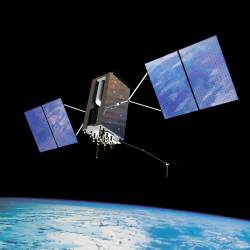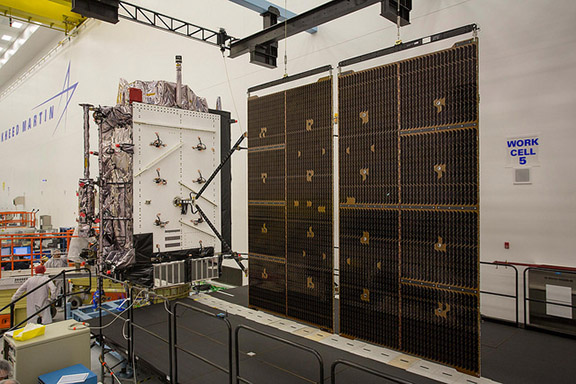 GPS III satellite. Lockheed Martin illustration
GPS III satellite. Lockheed Martin illustrationLockheed Martin has announced the successful, on-schedule completion of a system design review (SDR) for the second-phase of next-generation GPS satellite development, the IIIB increment.
The company’s Space Systems division in Newtown, Pennsylvania, is under contract to produce the first two of a planned eight GPS IIIA satellites, with first launch projected for 2014. The contract includes a Capability Insertion Program (CIP) designed to mature technologies and perform rigorous systems engineering for future GPS III increments.
Lockheed Martin has announced the successful, on-schedule completion of a system design review (SDR) for the second-phase of next-generation GPS satellite development, the IIIB increment.
The company’s Space Systems division in Newtown, Pennsylvania, is under contract to produce the first two of a planned eight GPS IIIA satellites, with first launch projected for 2014. The contract includes a Capability Insertion Program (CIP) designed to mature technologies and perform rigorous systems engineering for future GPS III increments.
An important milestone that precedes the preliminary design review (PDR), the GPS IIIB SDR established requirements for the capability insertion planned for the second-phase satellites and validated the satellite design.
“This milestone comes at a pivotal time when the need to affordably and predictably enhance the GPS constellation’s capabilities is at an all time high,” said Lt. Col. Don Frew, the U.S. Air Force’s GPS III Program Manager.
GPS IIIA will deliver signals three times more accurate than current GPS spacecraft and provide three times more power for military users, while also enhancing the spacecraft’s design life and adding a new civil signal (L1C) designed to be interoperable with other GNSSes. GPS IIIB will provide higher power modernized signals, a fully digital navigation payload capable of being reprogrammed to generate new navigation signals after launch, and a Distress Alerting Satellite System payload that relays distress signals from emergency beacons back to search and rescue operations.
The Lockheed Martin-led GPS III team, which includes ITT of Bloomfield, New Jersey, and General Dynamics of Scottsdale, Arizona, completed the milestone June 28–29 with the U.S. Air Force at Lockheed Martin’s facilities in Newtown. Representatives from the U.S. Air Force’s GPS Directorate, Air Force Space Command, the Defense Contract Management Agency, the Federal Aviation Administration, Department of Defense, and user communities participated in the review.
Meanwhile, Lockheed Martin says it is progressing steadily on the GPS IIIA program and on schedule to deliver the first satellite for launch in 2014. In August of 2010, the joint government and industry team completed a successful critical design review, which validated the detailed GPS IIIA design and allowed the program to begin the transition to the production phase. The program has now switched its focus from design to manufacturing and has already completed 90 percent of the program’s 59 manufacturing readiness reviews.
The GPS III team is developing a GPS Non-Flight Satellite Testbed (GNST), which will serve as the program’s ground pathfinder and vehicle demonstrator for the first complete GPS IIIA satellite. The entire GPS III development and production sequence will use the GNST to provide space vehicle design-level validation; early verification of ground, support, and test equipment; and early confirmation and rehearsal of transportation operations.
Most recently, GPS III subcontractor ATK shipped the GNST core structure to Lockheed Martin in May. The GNST will run through the same steps of the production flow as the flight vehicles, including environmental testing at Lockheed Martin factories in Newtown and Littleton, Colorado, followed by processing at Cape Canaveral Air Force Station, Florida. The team is on track to deliver the GNST to the new Littleton GPS Processing Facility in December 2011.





